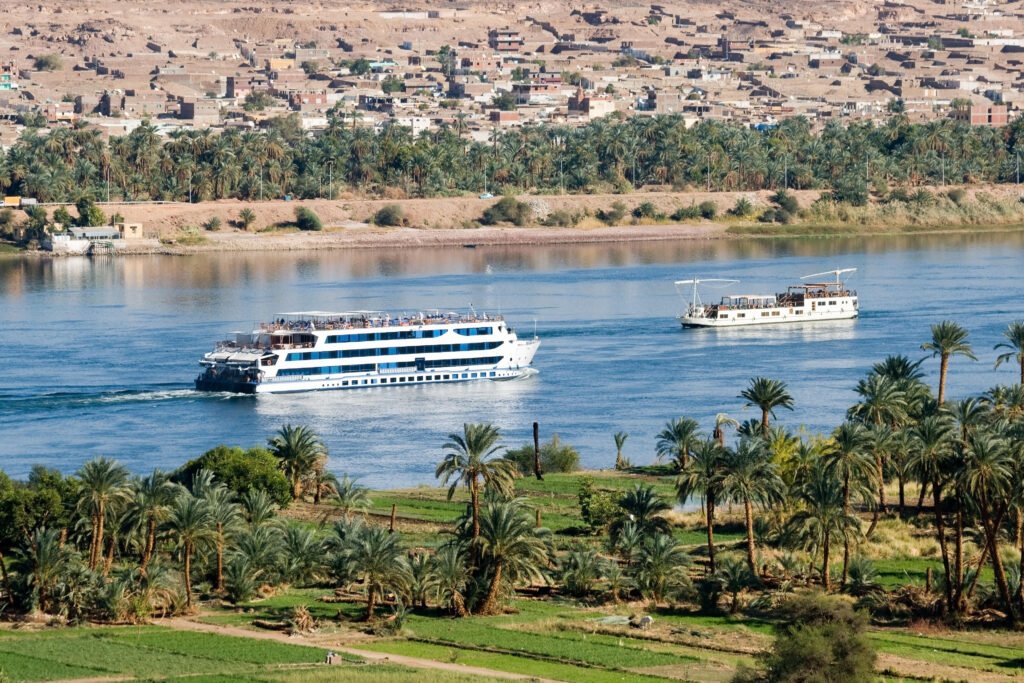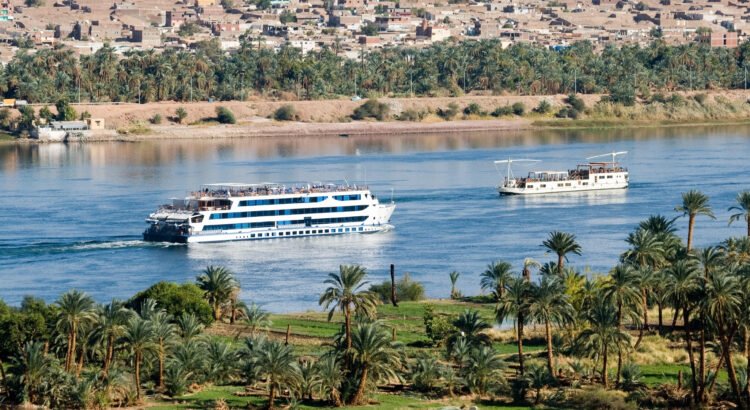
There are few places on Earth where time seems to stand still, where the past breathes alongside the present, and where human history feels as palpable as the stones under your feet. Egypt is such a place—an extraordinary land where ancient monuments stretch skyward from golden deserts, and the life-giving Nile River winds through millennia of civilization. To walk among the Pyramids and cruise the Nile is not merely a vacation; it is a profound journey into the cradle of human ingenuity, faith, and resilience.
This journey takes you through some of the most iconic and mysterious locations in the world: the colossal Pyramids of Giza, the enigmatic Sphinx, the Valley of the Kings, the bustling bazaars of Cairo, and the tranquil banks of the Nile that have nurtured life for over 5,000 years. Each step, each ripple of water, carries stories etched into the soul of Egypt—stories waiting to be discovered.
Cairo: A Modern City Wrapped in Ancient Mystique
Your Egyptian odyssey begins in Cairo, a city that never sleeps, vibrating with energy, color, and history. Home to over 20 million people, Cairo is a fascinating contrast of modern chaos and ancient calm.
At its heart lies the Egyptian Museum, a treasure trove of antiquities, including the golden mask of Tutankhamun, mummies of pharaohs, and thousands of artifacts spanning thousands of years. The museum offers a powerful introduction to Egypt’s dynastic history and lays the groundwork for understanding the sites you will soon see with your own eyes.
Wandering through Cairo, you’ll hear the call to prayer echoing through the minarets, pass vendors selling sweet dates and steaming cups of hibiscus tea, and encounter local children playing soccer beneath the shadow of medieval mosques and crumbling Ottoman mansions. It’s a sensory overload that somehow coexists beautifully with the timeless serenity you’ll encounter further south.
The Pyramids of Giza: Standing Before Eternity
Nothing prepares you for the sheer awe of your first glimpse of the Pyramids of Giza. Rising majestically from the desert plateau, the Great Pyramid of Khufu—the only remaining Wonder of the Ancient World—dominates the skyline with an almost divine presence. Nearby, the pyramids of Khafre and Menkaure add to the spectacle, forming a triad that has fascinated travelers, scientists, and mystics for centuries.
Constructed over 4,500 years ago, these pyramids remain an architectural enigma. How were such massive blocks transported? How did ancient engineers achieve such precise alignment with the stars? Standing at the base of the Great Pyramid, you feel dwarfed not just in size, but in imagination.
Don’t miss the Sphinx, a guardian of riddles with the body of a lion and the head of a king, watching over the necropolis with silent patience. The sense of scale, mystery, and ingenuity here is overwhelming—a true testament to the capabilities of ancient civilization.
Camel rides through the surrounding sands, guided tours inside the pyramid corridors, and panoramic views at sunset all enrich the experience. And as night falls, a sound and light show projects tales of the pharaohs onto the stones themselves, letting history literally speak to you under the stars.
Saqqara and Dahshur: The Precursors to Greatness
While Giza captures global attention, nearby Saqqara and Dahshur offer equally compelling insights into Egypt’s architectural evolution. At Saqqara, you’ll find the Step Pyramid of Djoser, the oldest pyramid ever constructed, marking the transition from simple mastaba tombs to more complex stone structures. Designed by Imhotep, a polymath considered one of the first architects in recorded history, this site is crucial to understanding the development of pyramid building.
In Dahshur, you can marvel at the Bent Pyramid, with its unique change in angle halfway up, and the Red Pyramid, one of the earliest examples of a smooth-sided pyramid. These quieter, less-crowded sites allow for a more contemplative encounter with ancient ingenuity.
The Nile River: A Lifeline Through the Ages
After exploring the wonders of the north, it’s time to embrace Egypt’s true heart—the Nile River. Flowing over 4,000 miles from central Africa to the Mediterranean Sea, the Nile is the longest river in the world and the very essence of Egyptian civilization.
A Nile cruise from Luxor to Aswan is a quintessential Egyptian experience. As you sail between the sun-drenched riverbanks, you’ll pass lush green fields, small farming villages, herds of water buffalo, and waving children—scenes that have remained virtually unchanged for centuries.
Your floating hotel is typically a luxury ship equipped with panoramic decks, comfortable cabins, and fine dining. However, for a more traditional and intimate experience, you can opt for a felucca—a sailboat that glides gracefully across the water, propelled only by wind and the skilled hands of local sailors.
Luxor: The World’s Greatest Open-Air Museum
Known in ancient times as Thebes, Luxor is a city of wonders. It’s often said that Egypt has more ancient monuments than the rest of the world combined, and Luxor is proof of that claim.
On the East Bank, you’ll find the awe-inspiring Karnak Temple, a massive complex of sanctuaries, obelisks, and hypostyle halls that span over 2,000 years of construction. Walking through the Great Hall, with its forest of giant stone columns inscribed with hieroglyphs, feels like entering the realm of the gods.
Just a short drive away lies Luxor Temple, beautifully illuminated at night, where sphinx-lined avenues and colossal statues tell stories of pharaohs and rituals. This temple is unique in that it was used continuously for religious purposes for thousands of years, including during Roman and Islamic periods.
The Valley of the Kings and Queens: Burial Grounds of Royalty
Across the Nile, the West Bank is home to one of the most famous archaeological sites in the world—the Valley of the Kings. Hidden within these arid hills are over 60 tombs, each built for a New Kingdom pharaoh. The most famous among them is the Tomb of Tutankhamun, whose intact burial chamber was discovered by Howard Carter in 1922, revealing treasures that still mesmerize the world.
Descend into these tombs to marvel at vibrant wall paintings depicting the afterlife, gods, and celestial journeys. The sense of reverence and the weight of history is palpable in the stillness of these underground chambers.
Nearby, the Valley of the Queens houses equally fascinating tombs, including that of Nefertari, wife of Ramses II. Her tomb is renowned for its vivid and beautifully preserved artwork—a testament to the sophistication and artistry of ancient Egypt.
Aswan: Tranquility, Temples, and Nubian Culture
Further south lies Aswan, a peaceful town known for its picturesque scenery, granite quarries, and Nubian heritage. The Philae Temple, dedicated to the goddess Isis, sits on an island and offers a surreal experience—reached by boat, surrounded by calm waters and palm trees. This temple was painstakingly relocated in the 1960s to save it from submersion caused by the Aswan High Dam, a modern marvel in itself.
From Aswan, you can also visit Abu Simbel, the grand twin temples of Ramses II, carved directly into the mountainside. Another UNESCO World Heritage site, it too was relocated to prevent flooding. The scale and precision of Abu Simbel’s construction are awe-inspiring, and during the Sun Festival, the inner sanctuary is illuminated by the rising sun—just as it was designed over 3,000 years ago.
While in Aswan, don’t miss a visit to a Nubian village, where colorful houses, friendly smiles, and rich cultural traditions invite you to a side of Egypt less traveled but deeply authentic.
A Journey to the Soul of Civilization
To walk among the Pyramids and cruise the Nile River is to trace the steps of gods and kings, priests and farmers, poets and conquerors. It is to witness the rise and legacy of one of the greatest civilizations the world has ever known.
This journey is not just about the past—it is about understanding the timeless themes of human ambition, spirituality, resilience, and connection to the natural world. The Pyramids may be silent, but they speak volumes. The Nile may seem calm, but it carries the pulse of eternity.
In Egypt, the ancient and the present are woven together into a rich tapestry that leaves an indelible mark on every traveler’s heart. Whether you’re a historian, a dreamer, or simply a curious soul, Egypt invites you not just to visit—but to listen, to feel, and to remember.




